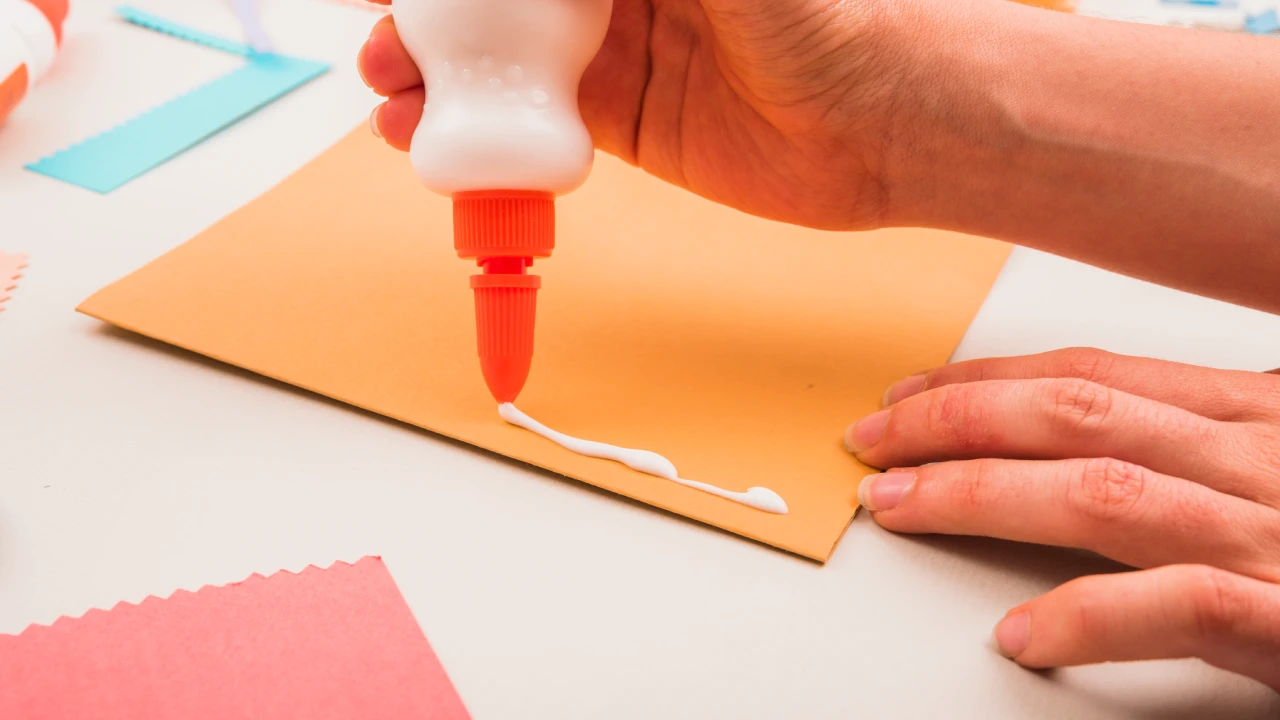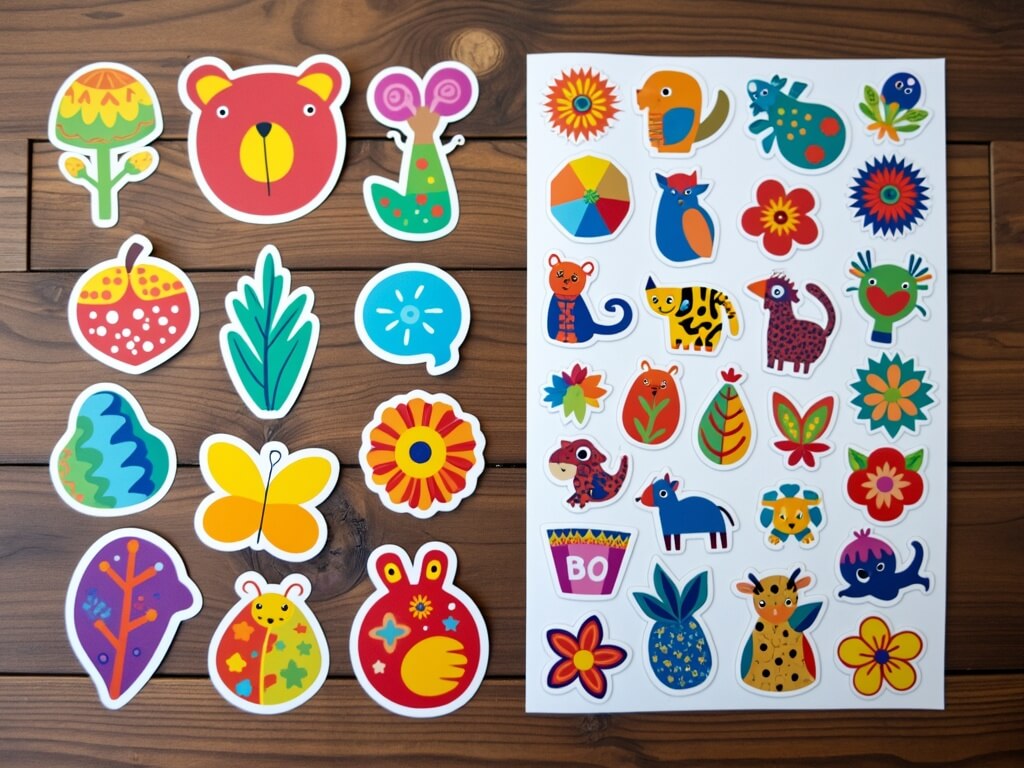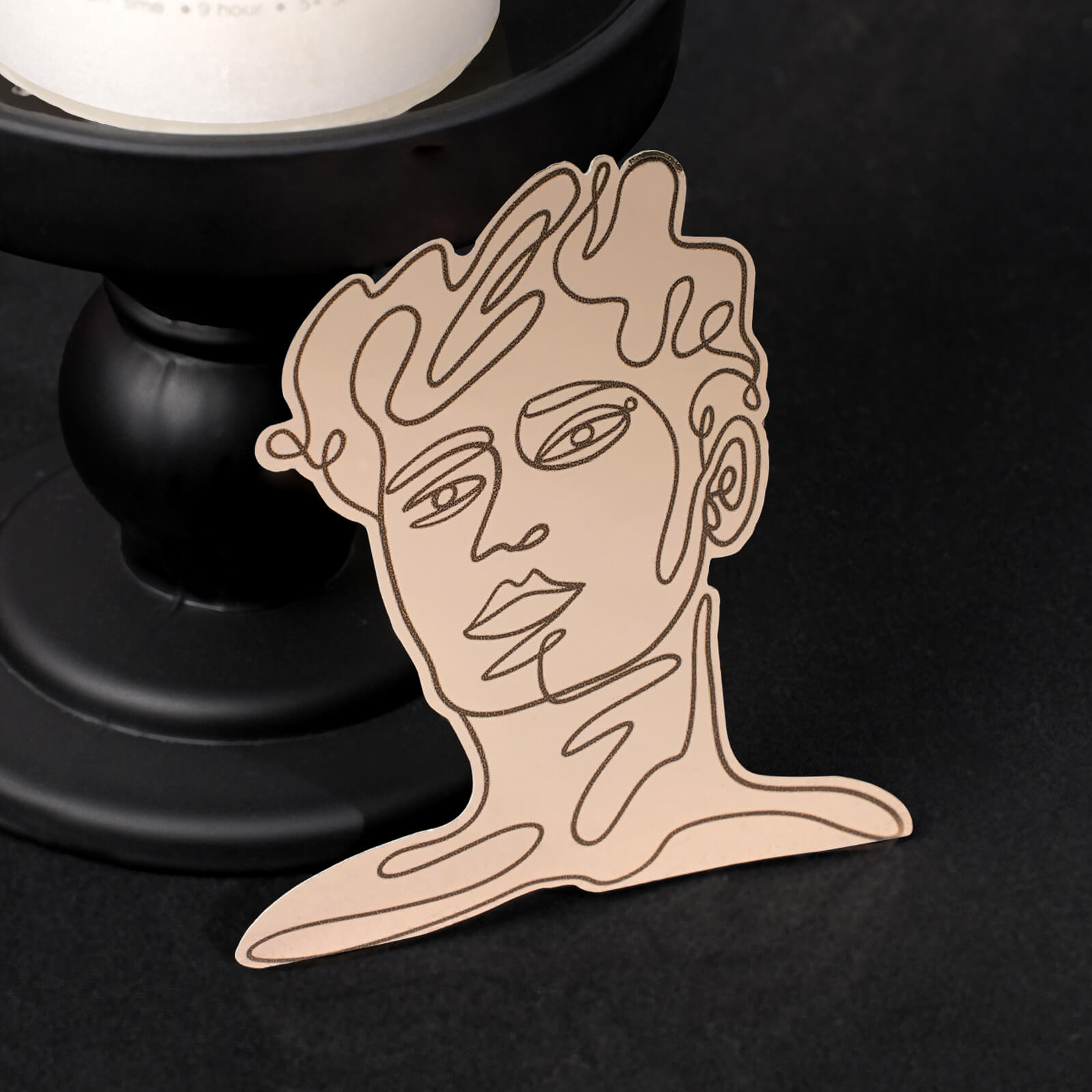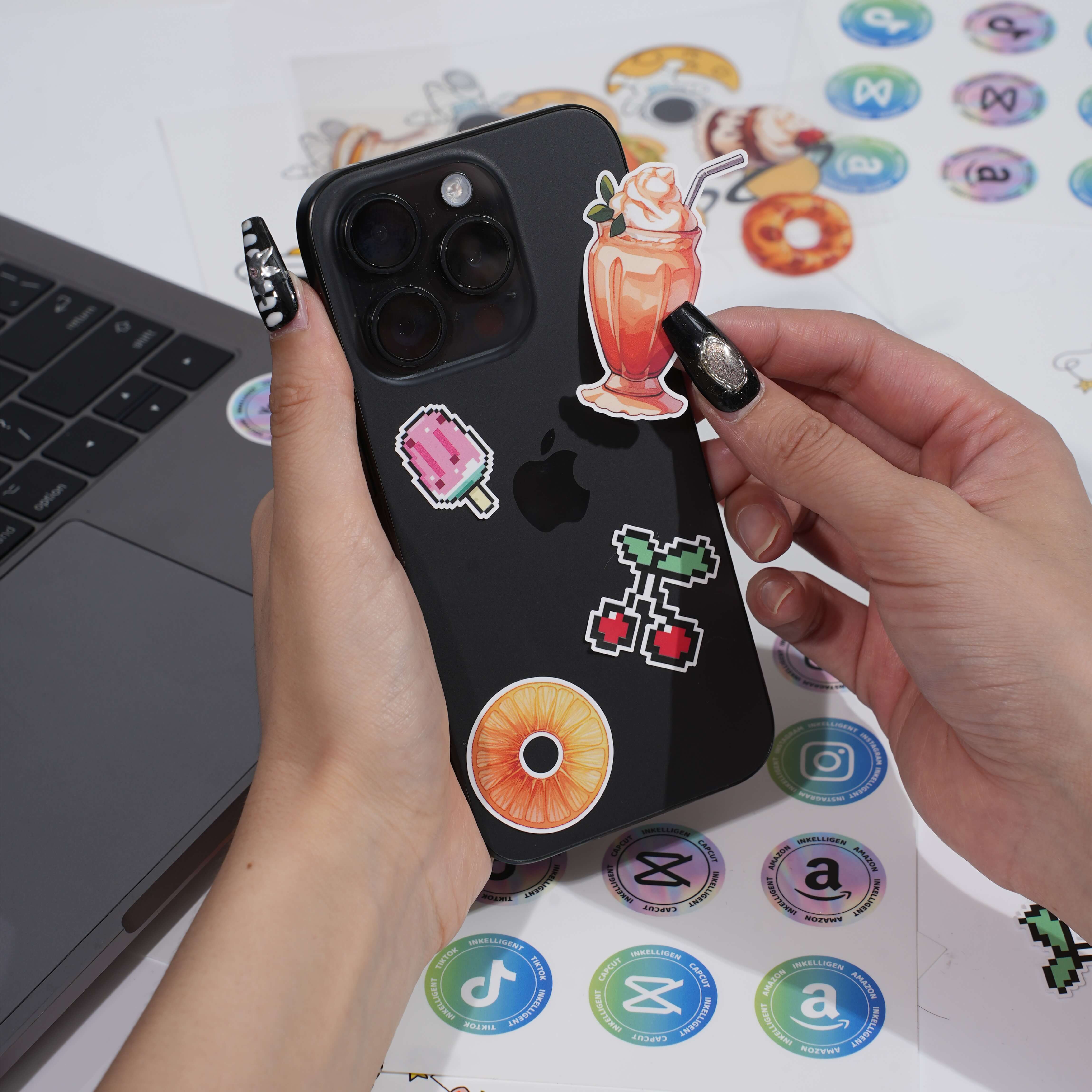Key Highlights
- Vinyl stickers, called vinyl decals, are a fun way to make glass, metal, or plastic look unique. You can use them to show your style on many things.
- When you use the right application method, you start by cleaning the part you want the sticker on. You need to place the sticker where you want it, and then use a squeegee to smooth it out.
- If you are new to vinyl, you can try the wet method. You just use some soapy water in a spray bottle. This helps you move the vinyl sticker into place before it sticks fully.
- Bigger vinyl decals can be put on with the hinge method, which uses masking tape. This helps make sure your sticker lines up the right way.
- After you finish, you slowly pull off the transfer tape. When this is done better, your own graphic is there and looks good.
Introduction
Have you ever wanted to make your laptop, car window, or water bottle feel special with your own look? Vinyl stickers give you a fun way to show off cool graphics and designs. You can use them, and they last long. They work well on many things, and anyone can put them on with little effort. If you use the right application method and grab basic things like a credit card or a squeegee, you will get a nice look with no bubbles. This guide will tell you each step you need for your graphics to stand out.
Understanding Vinyl Stickers and Their Popular Uses
Vinyl stickers and vinyl decals are now used by many people and businesses. You can stick these graphics on your own stuff, or use them to show off your company on things like cars. These vinyl adhesives look good and last a long time. If you have your own website, you can design your vinyl decals or vinyl stickers the way you want and get them printed, so they feel personal to you.
Understanding how these vinyl stickers are made is important to get a smooth look when you stick them on. If you want no bubbles or wrinkles on your sticker, you have to know how each layer of the vinyl sticker works with the other layers. Soon, we will talk more about what vinyl stickers are and find out the places where you can use them.
What Are Vinyl Stickers?
A vinyl sticker is a kind of decal made from a sheet of vinyl. A vinyl sticker is stronger than a paper sticker because it has three layers. These layers make it easy to put on things the right way. The bottom layer is a waxy backing paper. This paper keeps the adhesive, or glue, fresh until you are ready to use the sticker.
The middle part is the vinyl decal. This is the shape or design you want to show. It is cut out from strong vinyl. On the top, there is transfer tape, also called application tape. This tape is clear or a little see-through. It keeps every piece of your decal together. This is very helpful if you have to work with detailed graphics or any lettering in your design.
When you want to use vinyl stickers, you start by peeling the bottom backing off the sticker. The transfer tape keeps the vinyl pieces together, so you can set the design right where you want it. After you press the vinyl onto what you want, you gently take off the top transfer tape. This step leaves your sharp design on the surface. The layers help you use vinyl stickers without any bubbles.
Common Surfaces for Vinyl Sticker Application
One good thing about vinyl stickers is that they work in many ways. A vinyl sticker can stick well to lots of things if it is smooth and does not let air through. Before you use a vinyl sticker, think about where you want to put it. This step helps you get the best results when you start to use the sticker.
The adhesive on vinyl stickers helps the sticker stick really well to surfaces that are clean and flat. This keeps the sticker in place so it will not lift or come off easily as time goes by. You can use many content management tools to design your sticker. But remember, how long the vinyl sticker lasts has a lot to do with the surface you put it on.
Some of the most usual and best places to use a vinyl sticker are these:
- Glass is used for windows, mirrors, and doors.
- Plastic can be found in laptops, water bottles, and storage containers.
- Metal is in things like cars, refrigerators, and toolboxes.
- Sealed wood
- Tile
Vinyl stickers often do not stay on rough, bumpy, or soft surfaces, such as brick, cement, or wood that is not finished. The vinyl adhesive cannot touch every part of the surface, so it may peel off, and the sticker can look uneven.
Essential Tools and Materials for Applying Vinyl Stickers
To apply a vinyl sticker the right way, having the tools you need before you start can help a lot. You do not have to use special gear. There is a good chance you have many of these things in your home. When you use the right stuff, you can clean the spot where the sticker will go. This makes it easy to put on the vinyl sticker without any bubbles or lines showing.
Having things like a spray bottle, masking tape, and a plastic squeegee will help you get started the right way. We will talk about the exact tools you will need. After that, we will show you how to pick and get the best surface ready for your new decal.
List of Tools Needed for a Smooth Application
Before you start, it’s good to have all your tools set up and ready. A smooth application will be much easier if you use the right things. A lot of the items you need are just everyday things you may have in your home, so you probably will not have to go out and buy anything new. If you do not have a squeegee, you can use a credit card instead, and it will work well.
Using masking tape or painter’s tape helps you put stickers in the right spot. This step is very important when you handle bigger decals. When you use the wet application method, you need a spray bottle with a soapy water mix. The soapy water makes it easier to move the sticker around for good placement. This way, you can get it into the right place before it sticks for good.
Here is a list of tools that you can use to help you put your vinyl stickers on the right way:
| Tool | Purpose |
|---|---|
| **Surface Cleaner** | Rubbing alcohol or soapy water to clean the surface of dust and oils. |
| **Lint-Free Cloth** | To dry the surface without leaving behind any fibers. |
| **Squeegee or Credit Card** | To press the sticker down firmly and remove air bubbles. |
| **Masking or Painter’s Tape** | To hold the sticker in place for positioning (hinge method). |
| **Measuring Tape or Ruler** | To ensure your sticker is centered and level. |
| **Spray Bottle** | For the wet method, filled with a light solution of dish soap and water. |
Choosing the Right Surface and Preparing It
The first step to having a good vinyl sticker application is to start with the right surface. Vinyl, as said before, sticks best to surfaces that are smooth and not rough. After you pick the best place, you need to make sure to clean the surface well. If there is any dust, dirt, or oil left, the adhesive on your vinyl sticker will not attach the way it should, and you might see bubbles because of that.
To get the surface ready, you can mix some water with a few drops of dish soap or rubbing alcohol. Do not use any cleaners that leave a waxy or oily feel, since this will stop the vinyl glue from sticking right. After you wipe it, be sure the surface is fully dry, unless you want to use the wet application method.
Here is how you can get your surface ready to put on a vinyl sticker:
- Wipe the area with a cleaner like rubbing alcohol or some soapy water.
- Use a lint-free cloth or a paper towel to get rid of all the dust and grime.
- Let the area air-dry all the way before you move to the next step.
- For a wet surface, spray it with soapy water right before you put on the sticker.
Step-by-Step Guide to Applying Vinyl Stickers

Now that you have the tools and your surface is clean, it is time to add your vinyl stickers. This is when the fun starts. No matter if the design is small or big, take things step by step. This helps you get a good, neat look. You can use a few ways to put on vinyl: the dry method, the wet method, or the hinge method. The hinge method is best for larger vinyl decals.
Each way uses the transfer tape to pick up the sticker design from its backing and put it onto a new surface. Don’t worry, this is not hard. We will go through each step, from cleaning the surface to peeling off the transfer tape. With these steps, you can put your sticker on and feel sure you did it right.
Step 1: Clean and Prep the Surface
A clean surface is key if you want your vinyl stickers to stick well and last. If there is dust, oil, or grime left on the surface, you may get bubbles. This can also stop your vinyl stickers from sticking the right way. First, wipe the area with a good cleaner. You can use water mixed with a little dish soap. Rubbing alcohol also works for cleaning the surface before you put on the vinyl.
Use a clean towel or a cloth that does not leave lint when you do this. This way, you will not leave any fibers behind after cleaning. Be sure to wipe a place a little bigger than where you want the sticker to go. This helps make sure the edges of your vinyl decal or sticker will stick well and stay on a clean spot. Automotive expert Evan Ernst says, "Before you put on a vinyl decal, clean the area first with surface cleaner or rubbing alcohol." [1]
After you clean the area well, let it dry all the way. The application method you choose can matter. If you use the dry application method, the adhesive will not stick if there is any moisture. You can let air do the work, or use a dry and clean towel to dry the spot faster. A clean surface is the best way to get a smooth finish.
Step 2: Position and Align the Sticker
Proper alignment is what makes the difference between an amateur app and a professional one. Before you take off the backing from your sticker, you need to think about where you want to place it. You can use a measuring tape for this. It will help you keep the sticker in a straight and centered spot. When you feel good about the placement, you can hold it there for now.
A good trick for big vinyl stickers is the "hinge method." The hinge method helps you keep vinyl smooth with no wrinkles. Take some masking tape. Put it across the top edge of your sticker. This works as a hinge. The hinge holds your sticker steady on the surface when you put it on. This way you get a good finish with your vinyl sticker.
Here’s how to put your sticker in the right spot for perfect alignment:
- Put the sticker on the surface and move it until you see it is lined up the way you want.
- Use a piece of tape and stick it along the top edge. This will act like a hinge.
- This will help you lift the sticker and take off the backing. The sticker will not move out of place when you do this.
Step 3: Apply Using Dry, Wet, or Hinge Methods
With your sticker placed where you want it, you have to pick your application method. Most people use the dry application method for small stickers. To do this, lift the sticker with the tape hinge. After that, peel away the waxy backing. Then, put the sticker down slowly onto the surface. Use a squeegee to smooth out the sticker as you lay it down.
The wet method is a good way to apply stickers. It gives you more ways to move the sticker, so it's easy for beginners or when you have large decals. To do this, use a spray bottle to put soapy water on the surface and on the sticky side of the sticker. This makes it easy to slide the sticker where you want before the glue sticks. When you get the sticker in the right place, use a squeegee to move the water out from under the sticker.
For really big graphics, the hinge method works great. Start by taping the top edge with a piece of tape. Next, use another piece of tape to make a vertical hinge down the center. Work on one half at a time. Peel off the backing and stick the vinyl in place. This way, you get more control, and it helps stop wrinkles from showing up in the graphics.
Step 4: Smooth Out and Remove Bubbles
This is the time to make sure you get a smooth, bubble-free finish. No matter if you used the wet method or applied the sticker dry, you need to press it down well onto the surface. Take a squeegee or a credit card and start in the center of the sticker. Then, press out to the edges. This will push out any air bubbles or drops of water stuck under the sticker.
Apply firm and steady pressure as you move over all parts of the sticker. Make sure you overlap your strokes so you cover every area. This helps the adhesive stick well to the surface. Doing this will make your vinyl decals look painted on and smooth.
If you spot any stubborn bubbles:
- Use the squeegee to move the bubble to the nearest edge.
- If the bubble will not go away, you can take a fine pin and make a tiny hole in the center of it.
- Press down hard on the bubble with your finger or the squeegee. This will help let the air out.
- Once all the air is out, the small hole should be almost impossible to see.
Step 5: Final Touches—Waiting and Checking Adherence
Patience is important in the final step. After you have used the squeegee on the sticker and got rid of all bubbles, let the adhesive stick to the surface. This is called curing. The time you need to wait can change. If you used the wet method, it is good to wait up to 24 hours before you move on. If you used the dry method, waiting a few minutes is often all you need.
After you feel that the sticker has had enough time to stick, you can take off the top layer of transfer tape. Start at one of the top corners. Then slowly pull the tape back at a sharp 45-degree angle. Pull it back against itself, not straight up. This way, you can stop the vinyl from coming up with the transfer tape.
If you see part of the vinyl stickers coming up with the transfer tape, do not worry. Place that part of the tape back down on the vinyl. Press down hard with your squeegee or even your finger. Then try peeling off the backing again. Once you have taken the tape off, check to see if the vinyl is sticking well. Press down on the edges if you see any that need it.
Top Tips and Tricks for Perfect Vinyl Sticker Application
Even when you follow step-by-step instructions, putting on vinyl stickers can still be hard, especially if you use big stickers or place them on rough surfaces. If you learn some extra tips, you will be able to deal with these problems and get a great result every time. Think about things like the temperature and how to work with tough shapes. These simple tips will help you get better at using vinyl stickers and make your work look good.
No matter if you want to stick a sticker on a curve or you have a big graphic to put on without any wrinkles, how you do it is key. The right way to put it on can change everything. Below, you will read tips on how to avoid the usual mistakes people make with stickers. You will also read what you can do if you mess up or see a problem you want to fix.
Avoiding Common Mistakes and Dealing with Large or Curved Surfaces
One of the most common mistakes people make is not getting the surface ready before they start. This can cause bubbles or keep the sticker from sticking well. Another thing that goes wrong is rushing. You need to take your time, especially when you place the sticker and pull off the transfer tape. This helps with scalability and makes sure the stickers look clean.
Applying vinyl to big or curved surfaces can be tricky. When you work with big decals, it helps to use the hinge method with masking tape. The masking tape lets you hold the vinyl in place so you can get a good fit. If the surface has a curve, you can use a hairdryer on a low setting. A little heat makes the vinyl soft, and it will stretch better. This will help you avoid creases, and the vinyl will stick well as it goes over the curve.
Here are a few tips to avoid common mistakes:
- The best time to put stickers on is when it is not too hot or cold. Try to do it when the temperature is between 50°F and 90°F.
- Use the wet method for big decals. This helps you move them around to get the right spot.
- If you want to stick vinyl to a curved area, use a hairdryer. The heat makes the vinyl softer and easier to place.
- Pull the transfer tape off slowly and at a sharp angle. This helps keep the decal from coming up.
How to Fix Errors and Remove a Sticker Safely
Making mistakes when you put on a sticker using the wet method can feel tough. But you do not need to worry too much. A lot of errors can be fixed if you act fast. If you see that your sticker is not straight, you still have a bit of time. You can gently move it to where it should be, before the water dries up.
Later, if you spot a bubble under the sticker, do not panic. The best way to get rid of it is by using the pinprick method we talked about earlier. This easy fix helps make the sticker smooth again.
If you need to take off a sticker, it is easy to do. Maybe you made a mistake or you just want a new design. To remove vinyl, use a hairdryer. Aim the warm air at the sticker. The heat will make the adhesive glue softer. When it gets warm, you can peel the sticker off. Just use your fingernail or a plastic scraper.
To safely remove a sticker:
- Warm the sticker with a hairdryer. This helps make the adhesive less sticky.
- Use your fingernail or a plastic blade to lift one edge. Peel the sticker off slow to keep it in shape.
- If there is glue or sticky stuff left on the surface, use rubbing alcohol or a glue remover to clean it.
Conclusion
In the end, using vinyl stickers is an easy and fun way to make your things feel special. The process is simple if you have the right tools and know what to do. If you follow the steps in this guide, you will get a nice finish that helps your items look their best. You need to get ready and take care to avoid mistakes. This will help you get a smooth and bubble-free look. Just take your materials, start working, and enjoy how you change your things with unique vinyl decals. Have fun with your decorating! If you want more help or need tips, you can ask for a free consultation on vinyl sticker applications.
Frequently Asked Questions
How do I apply vinyl stickers to glass surfaces smoothly?
To put vinyl stickers on glass and get a smooth look, try the wet application method. First, clean the glass well. After that, use a spray bottle to spray soapy water on the glass. This will let you move the decal into the right spot. When you have the vinyl where you want it, take a squeegee and push out the water and any air bubbles. This way, the finished vinyl will look good on the glass.
Can vinyl stickers stick well on textured or uneven surfaces?
Vinyl stickers will not stick well to surfaces that are rough or uneven. This can happen on brick or if the wall has a rough paint. The vinyl adhesive needs the surface to be smooth and not let air or water in for it to hold. If you put a vinyl sticker on a textured surface, it can look bumpy. The sticker might not stick right and could come off fast.
How long should I wait before touching a newly applied vinyl sticker?
After you put on a vinyl sticker, you should give the adhesive some time to set. If you used the wet method, it is best to wait up to 24 hours before you take off the transfer tape or touch the sticker. For dry applications on a clean surface, it is good to wait at least an hour. This helps the sticker stick well and look good.
What is the wet method for applying vinyl decals, and when should I use it?
The wet method is a way to apply vinyl decals that uses soapy water. You spray both the vinyl decal’s adhesive and the surface with a spray bottle filled with soapy water. This method is good if you are new at using vinyl or when you work with big decals. It lets you move the sticker around before it sticks for good, so you get the alignment just right.



